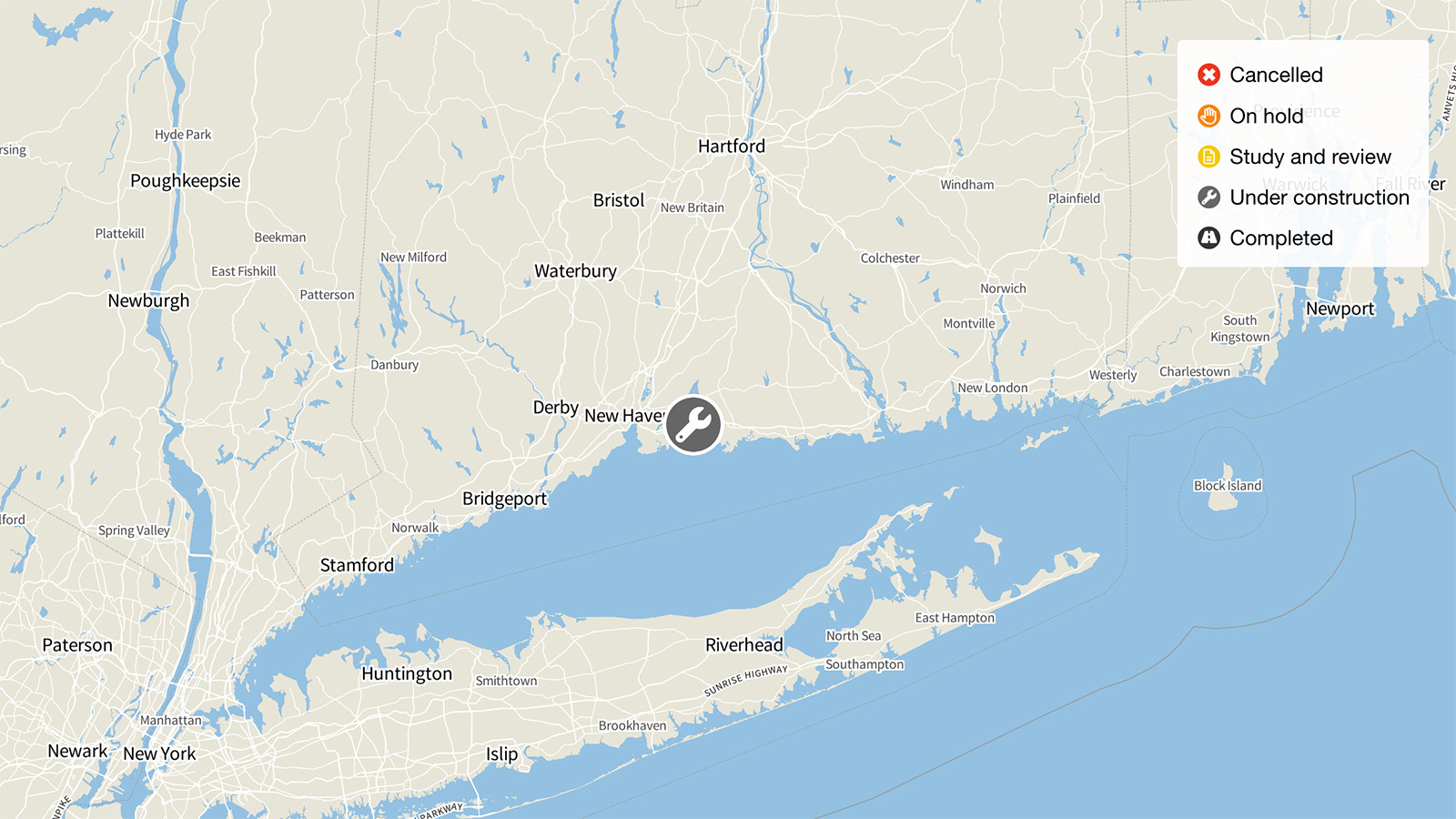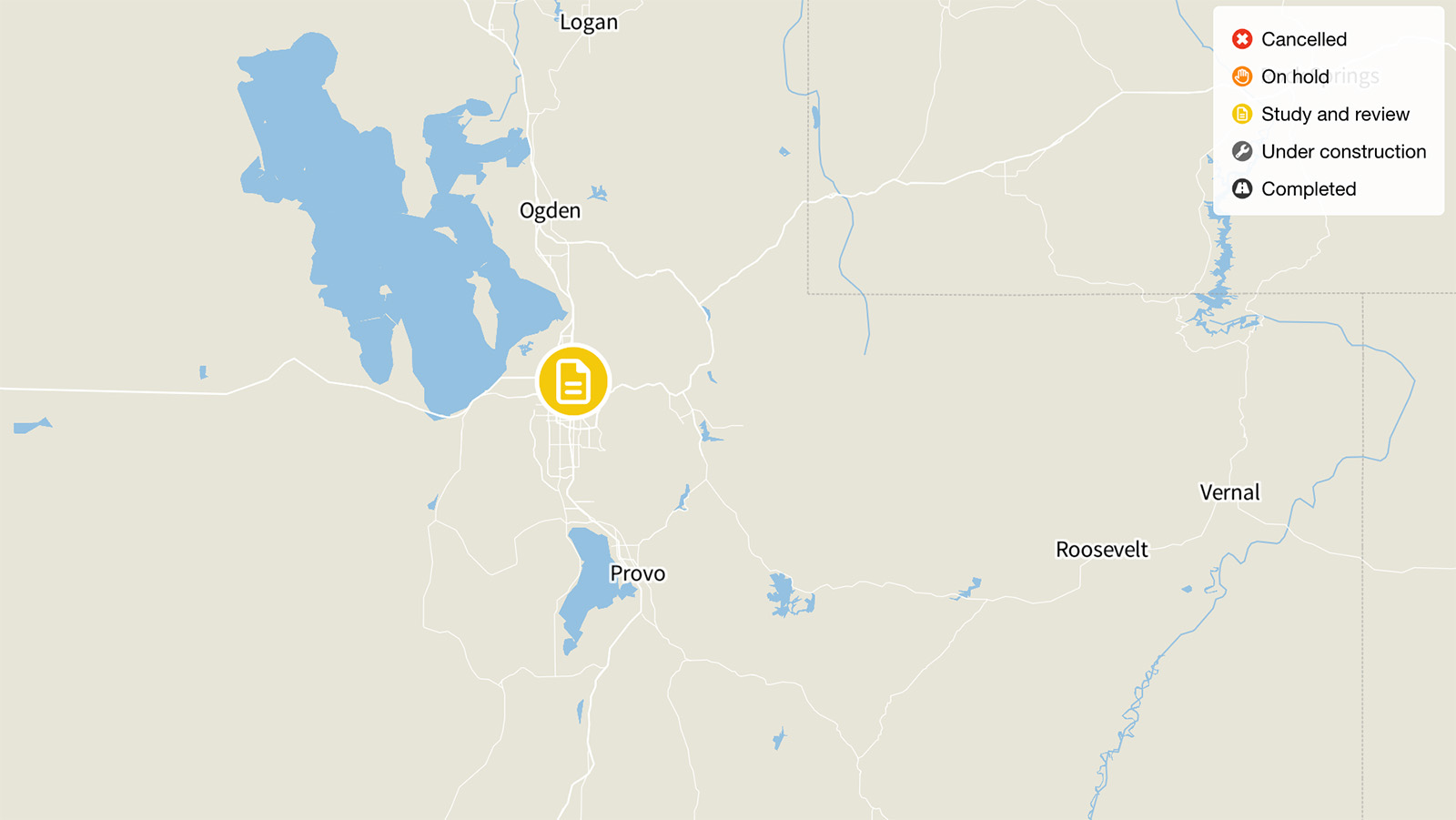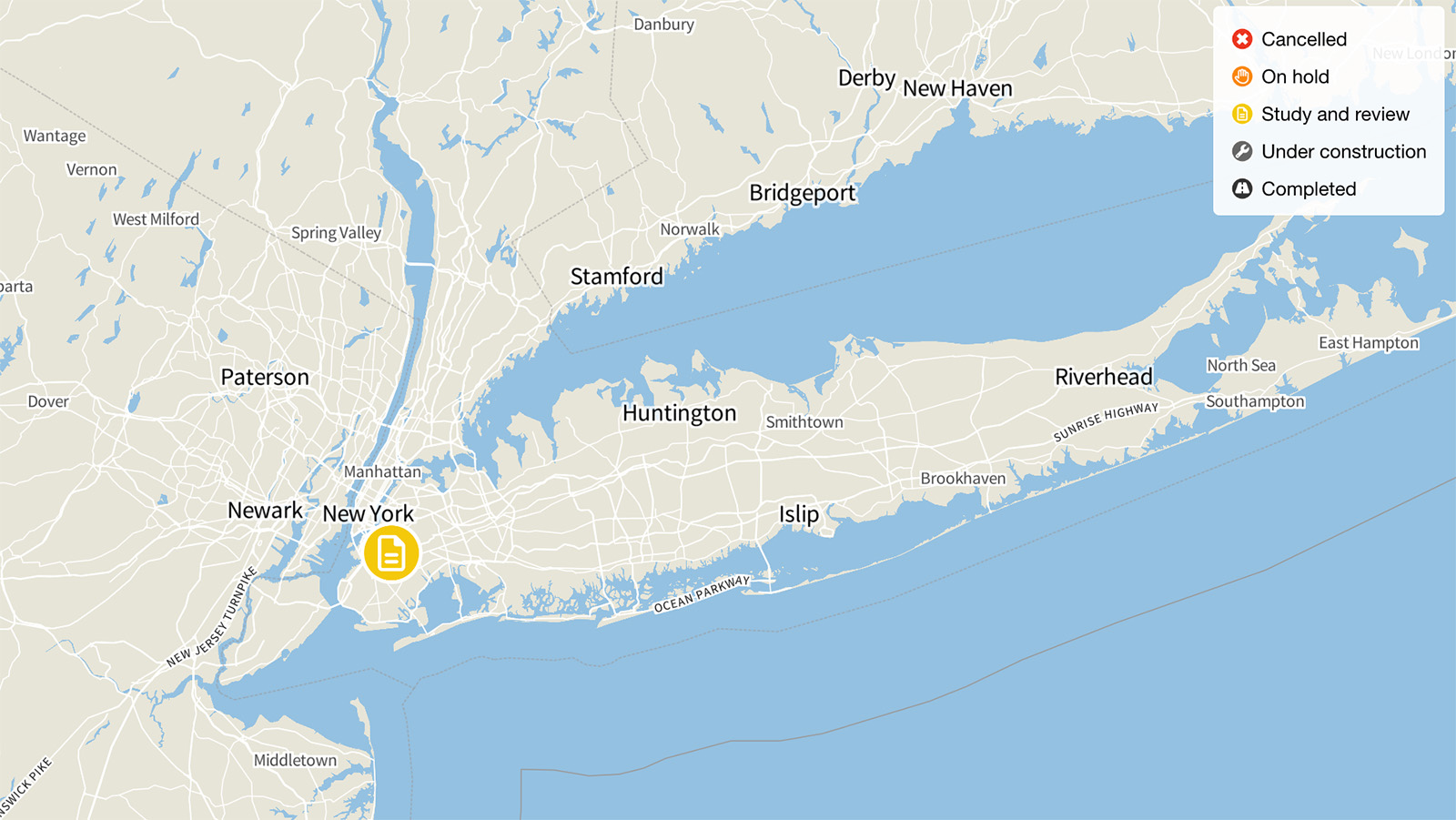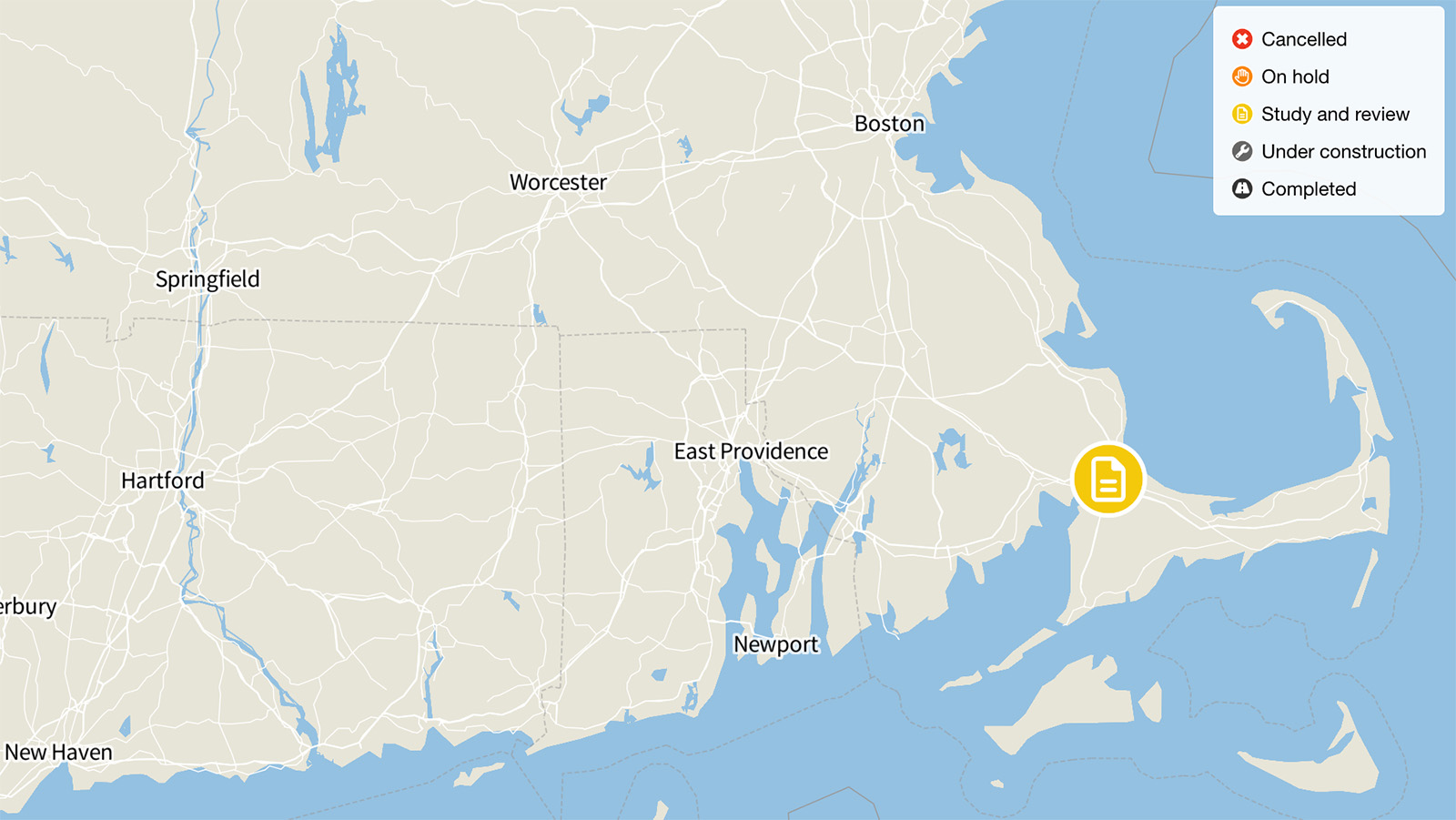
Widening I-95 Across the State, Connecticut
Along-dormant idea for a multi-billion-dollar expansion of I-95 is being promoted by the state’s governor as a fix for congestion, despite official studies dating back to 2002 recommending against any expansion of the highway, saying it would make congestion worse, extend traffic delays and increase pollution.

Status: Under construction
Originally reported cost: $11.2 billion
Update for current status
As of September 2023, the Connecticut I-95 widening project is currently under construction.
Update from Highway Boondoggles 4, 2018:
The $11.2 plan to add an additional lane on both sides of I-95 along the length of the entire 110-mile corridor through Connecticut is currently being revised and scaled down – although it remains a multibillion dollar project.
The state appears to backing away from plans for a full-length widening because of its prohibitive expense. In its place, Governor Daniel Malloy is proposing an only somewhat more modest plan to expand select sections of I-95, at a cost of $4.3 billion. Still, state lawmakers question how to pay for even that reduced project and are struggling to keep the state’s special transportation fund from falling into a deficit in the fiscal year starting July 2018.
Original story from Highway Boondoggles 2, 2016:
Along-dormant idea for a multi-billion-dollar expansion of I-95 is being promoted by the state’s governor as a fix for congestion, despite official studies dating back to 2002 recommending against any expansion of the highway, saying it would make congestion worse, extend traffic delays and increase pollution.
Connecticut Governor Dannel Malloy has proposed a 30-year, $100 billion plan to invest in transportation across the state. More than 10 percent of that spending, $11.2 billion, is dedicated to reversing decades of Connecticut’s planning priorities by adding an additional lane to I-95 across the entire state – 110 miles from the New York state line to the Rhode Island border.
Malloy says his proposal will reduce congestion, despite years of industry and academic research showing that widening highways is an expensive and ineffective way to solve congestion-related problems. “You can’t build your way out of congestion,” the chief planner of the Connecticut Department of Transportation told the Connecticut Post in October 2015.
Local knowledge dating back more than a decade also supports looking for solutions other than highway widening. In 1999, a consultant’s report came out identifying congestion along I-95 as a barrier to business interests across the state. A government-commissioned follow-up study was issued in 2002 with 150 recommendations for addressing the state’s transportation needs, none of which included widening I-95.
“Significant increase in road capacity . . . would be very expensive and would have negative environmental impacts. Moreover, adding capacity to highways induces additional traffic, as people take additional automobile trips and new development creates even more demand. It is now generally accepted that states cannot build their way out of congestion.”
The report’s top recommendations specifically target congestion on I-95, but rather than proposing highway expansion, they endorse improved rail service for passengers and freight, and state policies “to encourage commuters to modify their travel patterns and behavior in such a way as to reduce single-occupant vehicle traffic and, by extension, traffic congestion.”
One example the report raises is adding variable tolls to the road at peak times, which could encourage people to shift their travel times, consolidate trips, or otherwise reduce their driving. A 2009 study found that doing so on I-95 and State Route 15 between the New York state border and Stratford in southwestern Connecticut could reduce the volume/capacity ratio by 10 percentage points on both roads and raise $40 billion. Investing that money in improving access to existing transit, building new transit connections, expanding rail capacity for freight traffic, and focusing development on transit-accessible areas could help further reduce congestion throughout the region. In fact, the 2002 state plan explicitly “opposes expanding vehicular capacity on I-95 west of New Haven . . . unless and until all reasonable alternative modes of transportation and strategies have been explored and put in place.”
There is a clear, proven and obviously better choice for Connecticut: the rail line that parallels I-95 across the entire state, carrying the Metro-North rail service between New Haven and New York City, Shore Line East rail service between New Haven and New London, and the Amtrak Acela high-speed rail service along its entire length. Shifting the billions from highway expansion to rail improvement could deliver significant benefits, including meeting the governor’s goal of congestion reduction.
Rail was highlighted in that 2002 report as a major way to fight congestion. Metro-North’s potential was proven in a 2009 survey of Fairfield County businesses, which found, in the words of a 2011 Connecticut Transportation Strategy Board report, that “economic growth in the I-95 corridor continued even as congestion brought traffic on I-95 . . . to a crawl.” The reason was simple: Though “highway capacity was exhausted, capacity still existed on [the] New Haven Line.”
As I-95 traffic in southwestern Connecticut fell an average of 0.8 percent a year from 2008 to 2014, New Haven Line ridership grew an average of 0.6 percent a year. Rail improvements can improve train service and further reduce congestion on I-95, according to both the 2002 report and a 2014 study of the New Haven Line by the New York metropolitan area’s regional planning authority.
Gov. Malloy has also called for increasing service on the New Haven Line: Part of his $100 billion transportation plan calls for $22 billion in spending on maintaining and improving the state’s rail system. Of that, $14.6 billion would go toward preserving and maintaining the existing system; $7.2 billion would pay for expansions to service.
Customer demand is already driving increased service frequency on the rail line. Five of the last seven years have seen historic ridership highs for the New Haven Line. In November 2014, Metro-North trains started coming every half-hour all day. Demand for that improved service contributed to the New Haven Line setting a new all-time ridership record in 2014. Calls have already come for service to increase to once every 10 or 15 minutes.
Even more demand for New Haven Line service may develop as a result of a slated extension of MetroNorth service to Penn Station, to be paid for by New York’s Metropolitan Transportation Authority.
Improving the rail corridor through Connecticut to reverse years of delayed maintenance needs and to provide required safety upgrades would require $1.8 billion beyond already allocated funding from 2016 to 2020, according to a federal report released in April 2015. Fully revamping the corridor from Washington, D.C., to Boston to provide modern high-speed rail service would cost an estimated $151 billion through 2040. Improvements in Connecticut and adjoining states would cost $62 billion.
Of that $62 billion, $3.9 billion – $2.1 billion beyond the maintenance and safety needs highlighted above – would pay for upgrading existing tracks, including those along the Connecticut coast, to be ready for high-speed rail between New York City and Boston. It would also include building additional tracks on segments of the route from New Haven to Springfield, Massachusetts, to allow more trains to travel more quickly.
The remaining $58 billion would be spent building a new rail route heading northeast from New York through Waterbury, Danbury and Hartford. On that route, new train cars would roll at speeds up to 220 miles per hour, far faster than the current Acela maximum of 150 miles per hour. That would cut the current three-and-a-half hour trip from Boston to New York down to just over 90 minutes.
With limited financial resources at hand, Connecticut faces a choice between a vision of the future based on speedy and efficient rail service and one that expends vast resources on the expansion of a highway that is likely to remain just as congested afterwards as it is today.

Topics
Find Out More


I-15 Expansion, Salt Lake City

The Brooklyn-Queens Expressway, New York


